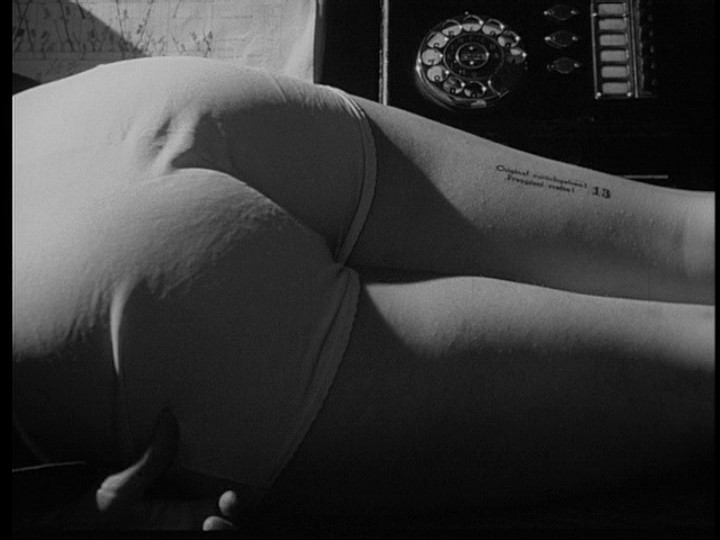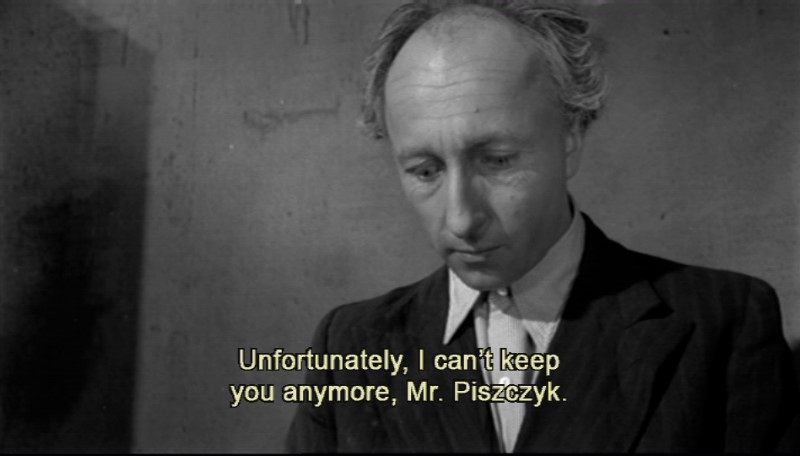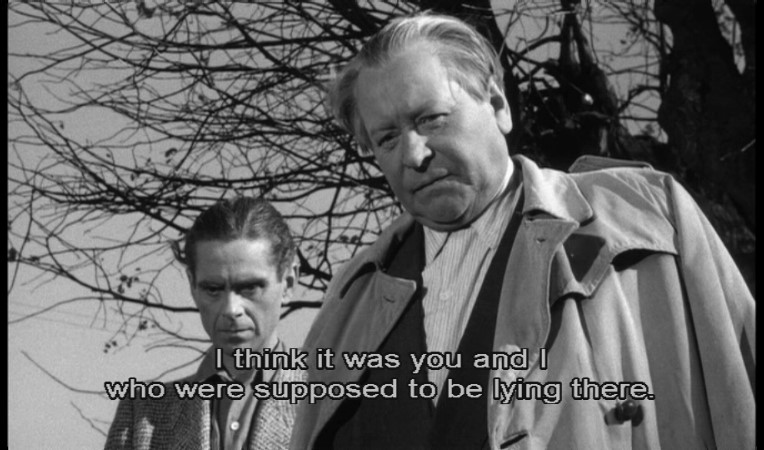Lunacy is experiemental in form but not avante guarde in the sense that there is little dedication or conversation with human society as a whole. Švankmajer seems to be not at all concerned with the sputters of society. Instead, the symbolism that has culminated in his mind is released and the result is Lunacy--slight pun intended. There is no realism to speak of because Švankmajer is interested in the spiritual or abstract. If we are looking for some kind of reality, we are expected to look beyond the images on screen because they only vaguely refer to familiar things. We must thumb through our own memories to compensate for the incoherent images on the screen if we want this film to make sense. This is where interpretation becomes key. Švankmajer himself expresses preference for individual interpretations of his film, but he seems to reserves critical elitism for himself.
With this film, Švankmajer documents sessions of auto-therapy, which could be called surrealism. Through the opening scene, Švankmajer sets contextual grounds for his film and introduces his art family which includes Edgar Allen Poe and the Marquis de Sade, the latter being a main character in the film who narrates this first scene. The film's blasphemy and subversiveness is also credited to Sade, according to the opening speech. The beginning sequence is a little pretext for us to mull over, as if Švankmajer grounds his argument or justification-- which becomes the driving force for the rest of the film.
"Art is dead," Švankmajer expresses through the narrator. It is safe to say that this film participates in an active debate on the function of art. I think Švankmajer's Marquis de Sade during the opening sequence was responding to modernist modes of art, in which there is a conscious project to remove art from the day-to-day and instead reserve its space outside of or high above the world. Art is removed from reality in order to provide commentary and often simultaneously contribute to the tradition of art by alluding to past achievers. As a response, artists address the self-consciousness requisite of art as creating problems for the liberation of individual imagination because there are now limits imposed on the artist should he or she sign onto this very specific project.
So then the solution is to destroy 'art.' In other words denounce the present point of the evolution of art, however, that may be interpreted. I'd venture to say that there is infinite ways to argue Lunacy is similar to work from Dada artists because both are in conversation with the Enlightenment rigor of reason and logic (leading the world into WWI and massive devastation, not to mention the horrors of WWII with respect to the holocaust). Svankmajer seems to feel the shock that spread over the art community during WWI as the Dada movement flourished. He envisions the world of today as a horrific one that combines the very worst aspects of absolute freedom and punishment/control. This theme is apparent throughout the film. Švankmajer brings out the ridiculousness and utter grotesqueness of unrestrained indulgence as a group of people eat cake at a dining room table, with an over persecuted Jesus statue in the background
We see super close-up shots of the diner guests smearing the cake all over their mouths. The heightened soundtrack captures every nuance of sound coming from the devourers. Another obvious point of unrestrained chaos is the madhouse sequences where we see the chaotic 'treat patients as equals' ordinance in play. The camera lens peeks out a window to record a lunatic whose fetish is hitting things. He violently knocks another man on the head with a shovel. Control and punishment is shown in a horrific light. The madhouse is run by a man whose correctional method is a kind of compulsive mind/body balance quackery to likes of Dr. Benjamin Rush. People whose minds are overdeveloped to varying levels of insanity can be cured with affliction to the body which will then bring the mind back in check. A man has his eyes stabbed out. Another has his tongue removed. Needless to say, Švankmajer is successful when turning his audience off on punishment.
Švankmajer breaks the traditions down as if to refuse any requisite or project which posits a goal or obligation for art. However, like some modernists, such as T.S. Eliot, Švankmajer does include self-conscious elements which draws attention to the film as art by alluding to other artists with the Marquis de Sade character, elements of Sade's writing, the elements of Poe stories, and other references to art. This added, for me, a slightly annoying element of pomp to the film. I felt, while watching this film, a little but like I did when trying to read T.S. Eliot's "The Love Song of J. Alfred Prufrock" without ever having read Dante or any of the other works Eliot plays on, as if Eliot has expectations of his readers and those who did not get the memo to read entire body of literature from era, are simply left out of the circle of knowledge (classic Modernist project). But there was pure enjoyment to be had when watching how the film poses itself as the worst dream I've ever had; chocked with humiliation, rape, mutilation, blasphemy, infidelity, one dimensional characters chasing me with a straight jacket, and disgusting slabs of meat writhing around doing human things. Maybe it's a matter of taste.
I argue that Lunacy is a successful example of postmodernism because the narrative interrupts itself and effectively draws our attention to the exhausted plot structures of traditional film. There is a parallel story that vaguely relates to the primary narrative but in total abstraction. The camera cuts to scenes of eye balls, tongues, and other unidentified slabs of meat, dancing, having sex, drinking beer, telling their own story, perhaps as a morbid gimmickry. The film also mocks old-fashioned allusion and reference (and quite literally. The Marquis de Sade sits at an artist's desk directing a tableau vivant of Delacroix's "Liberty Leading the People"--so I guess this was a popular thing to do in France, but filming the event too is something like meta-mockery!) Concurrently it mixes time periods and artistic styles, refusing politics and any active agency in society; all of which effectively distinguishes the film as an autonomous work of art rather and not another cultural relic. The setting confuses and disorients to, I think, the point of pleasure because it becomes clear early on in the film that there is no specific setting or logical progression from one time period to another, only a layering or collage of time that doesn't really draw on the plot in any logical way. The spectator is on a playground of time periods spanning from 18th century Enlightenment Philosophy and the French Revolution, to technologies of the 21st century. We see horse drawn carriages, trains, cars, 18th century costumes, archaic methods of punishment, modern-looking lunatic institutions etc. There are references to various historic stories such as Narcissus, Oedipus Rex, King Arthur stories. The film is a network of tropes from Western culture. It refutes knowledge, replacing logic with abstraction that confounds combined with somewhat nauseating images (esp. for vegetarians).







 The directors restore our hope by offering an idealized release from the classic pity and terror scene he's contrived for us. A formally dressed Brtko and a healthy looking Mrs. Lautmann peacefully ride together on a white horse-drawn carriage. The lens distorts the hard edges of reality and we get the sense that they are in somebody's dream or heaven. A soothsaying Mrs. Lautmann converses with Brtko through voice over suggesting that they have a telepathic connection or that the limits of human communication are overcome in this mystical place, whatever it may be. The directors redeem us with hope and a pseudo-lesson in universal sorrows in connection with the root of all evil: fear. The Shop on Main Street is heart wrenching, but predictable. However, it successfully sells itself as a tragic film capitalizing on an immeasurably horrific historical moment. I don't blame him, I can imagine how hard is is to sell a film that's made in a marginalized language. I, too, might focus my creativity on getting my film to the shop on mainstream.
The directors restore our hope by offering an idealized release from the classic pity and terror scene he's contrived for us. A formally dressed Brtko and a healthy looking Mrs. Lautmann peacefully ride together on a white horse-drawn carriage. The lens distorts the hard edges of reality and we get the sense that they are in somebody's dream or heaven. A soothsaying Mrs. Lautmann converses with Brtko through voice over suggesting that they have a telepathic connection or that the limits of human communication are overcome in this mystical place, whatever it may be. The directors redeem us with hope and a pseudo-lesson in universal sorrows in connection with the root of all evil: fear. The Shop on Main Street is heart wrenching, but predictable. However, it successfully sells itself as a tragic film capitalizing on an immeasurably horrific historical moment. I don't blame him, I can imagine how hard is is to sell a film that's made in a marginalized language. I, too, might focus my creativity on getting my film to the shop on mainstream.







